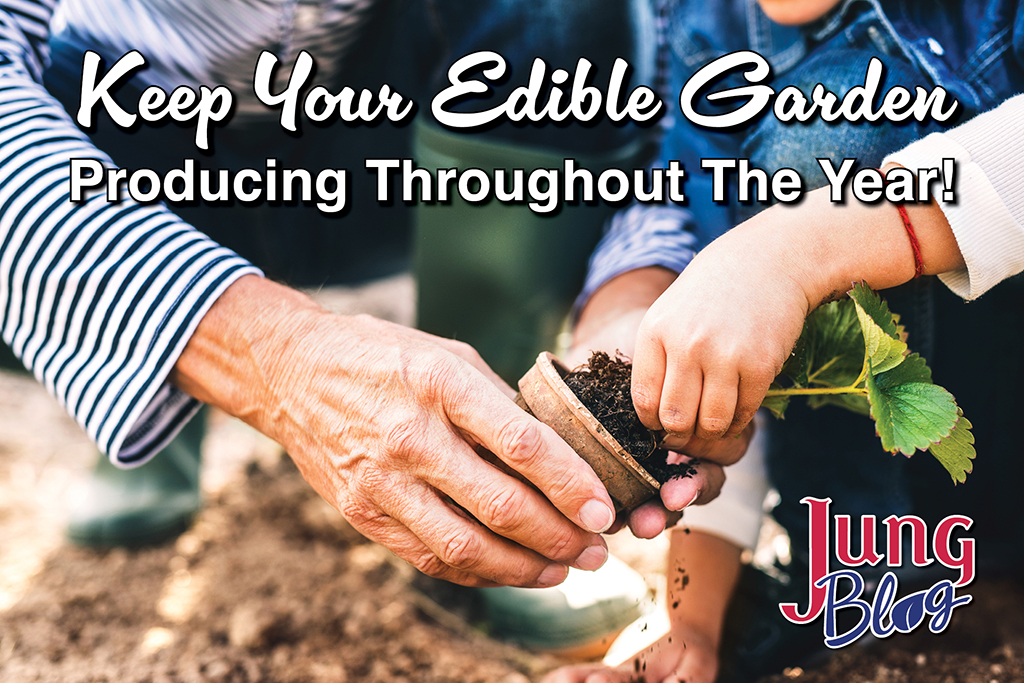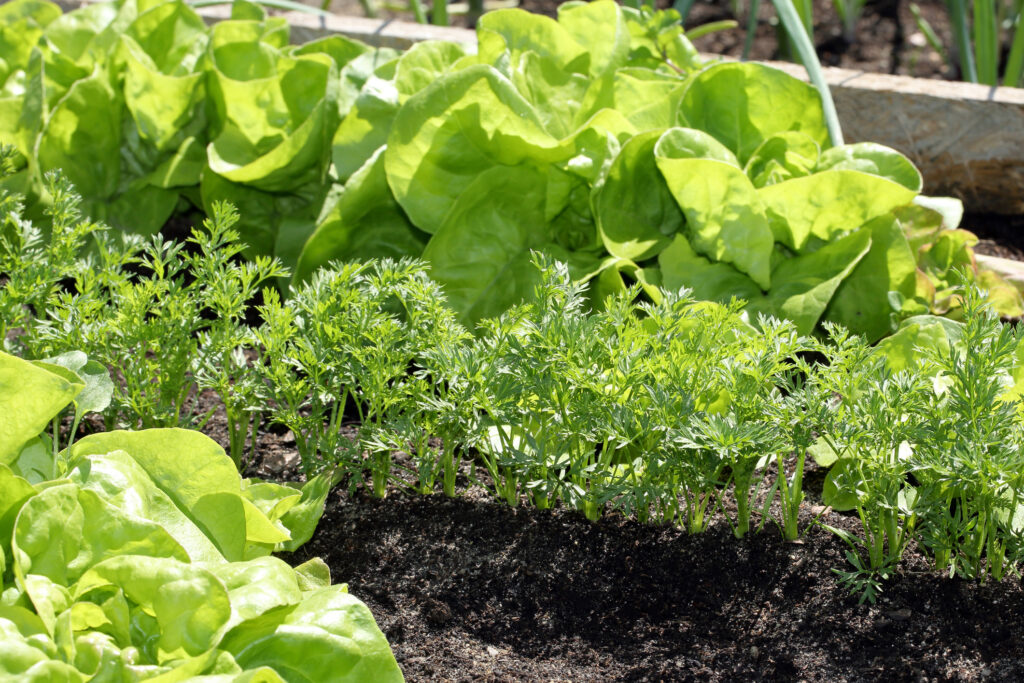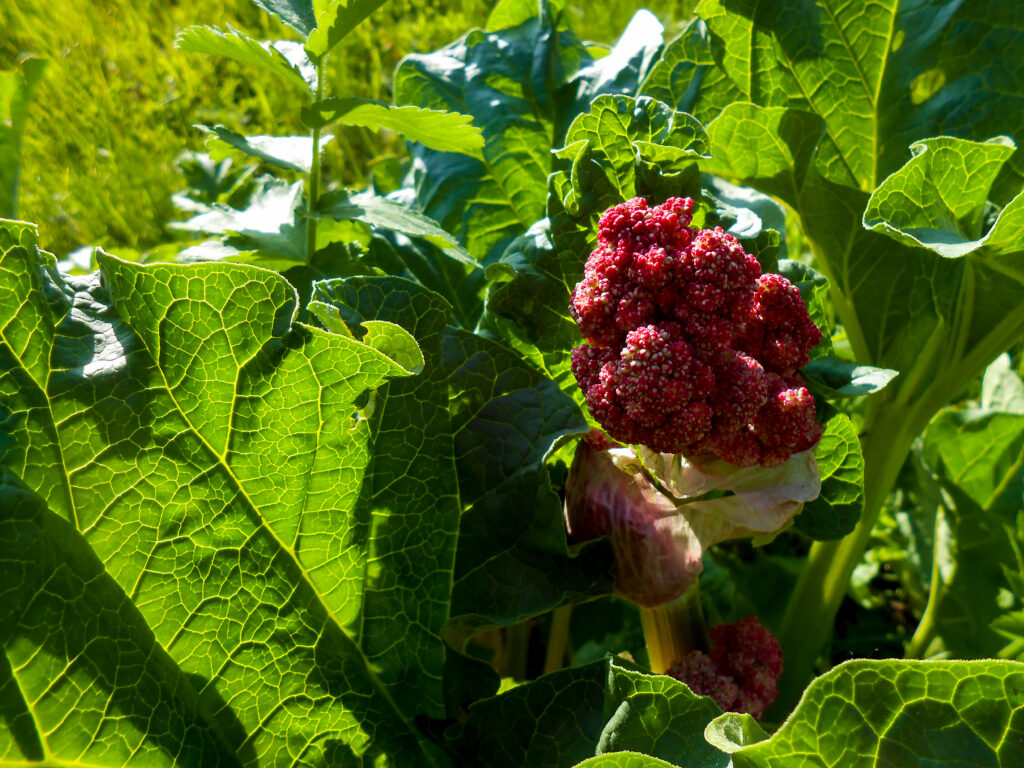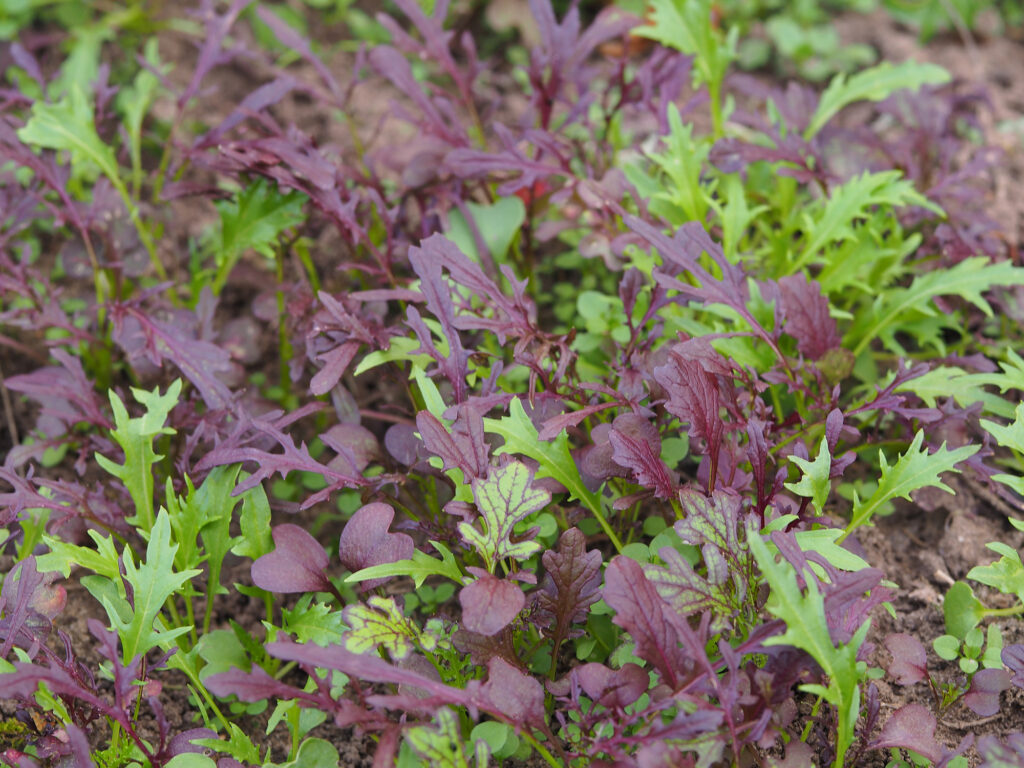
1 in 3 U.S. households now grow their own food, and it’s easy to see why. Fruit, vegetables, and herbs that come from your own garden are superior in virtually every way: they’re more flavorful and nutritious than store-brought produce, and can even slash grocery bills. On average, a 600-square-foot garden yields around $600 of produce per year. But while summer may be the prime harvesting time, that doesn’t mean your garden has to go dormant come fall. With some careful planning — which includes smart planting strategies and sowing a nice mix of perennials and cold-season crops — you can keep your garden producing year round, even in the dead of winter.
Use Succession Planting

Succession planting involves planting seeds strategically in continuous intervals, so you’re rewarded with a steady harvest instead of one big glut. Although there are several ways to approach succession planting, a simple technique is to stagger when you sow your seeds. For instance, you might sow carrots in May, and they’d be ready to harvest in August. Then, you sow another batch of the same carrots in July, with those ready in October. Aside from carrots, plants like radishes, beans, and lettuces also work well with this kind of planting as they grow throughout summer and fall, and you don’t have to wait long for them to mature.
You can also do a similar thing with fruit, but as fruit generally takes longer than veg to mature and ripen, it’s useful to choose varieties with staggered ripening times. For example, try planting summer-bearing raspberries like Jewel and Raspberry Shortcake, which ripen mid-season. Then, plant some fall-bearing varieties to follow. Heritage raspberries are ready from late August until frost, while Caroline raspberries typically mature a couple of weeks earlier, so you’ll get a longer harvest.
Add in Long-Lasting Perennials

Perennials often produce early or later in the season, which means you’ll still have something to harvest while waiting for your edible annuals to mature. Asparagus, for example, is a perennial that produces delicious young shoots every early spring. But, you’ll need to be patient and let it first establish itself for a couple of years, and harvest only once it’s been in the ground for three years. The crop can then last for over twenty years. As for perennial fruits, rhubarb’s a great pick. Well, technically, it’s a vegetable, but people generally think of it as a fruit and use it as one. Rhubarb should be planted in early spring, but you’ll need to wait two years for your first harvest. After that, you can look forward to a new crop every spring, and there’s always the possibility of some extra rhubarb throughout the summer. You can then turn your fresh rhubarb stalks into wonderful jams, jellies, and even crumbles. If you have an outdoor kitchen, that just makes it all the more fun. In fact, outdoor cooking and dining is currently a major trend this year, which is no surprise. With a well-equipped backyard kitchen, you can quickly whip up delicious meals and desserts with your own ingredients, surrounded by the beauty of your garden. You’ll find the food even tastes better this way.
Include Cold-Season Crops

You can also plant cold-season crops to extend your harvest right through winter. Dinosaur kale is a great option here. It can be sown in the early summer, and you’ll be eating it 45-60 days later, all the way through fall, winter, and early spring. In fact, the flavor actually improves after a frost. A few other leafy greens that do well over winter are spinach, mustard, and mizuna. Just take care to pick only a few leaves at a time from salad greens, and they’ll keep on producing. Beets, carrots, and parsnips are also semi-hardy, and able to withstand light frosts. But if you’re worried about the weather, you can always use row covers to protect these vegetables from rain and snow. On sunny days, remove the covers, so the crops don’t overheat.
A year-round edible garden is easier to achieve than you may think. With a bit of planning and preparation, you can look forward to a continual supply of tasty, fresh homegrown produce season after season.
Other Reading Recommendations

- Growing Smarter: Understanding Zones, Soil, and Microclimates
- Garden Myths vs. Facts
- Composting Basics for Beginners
- Tips For Gardening Success: Healthy Soil

At Jung Seed Co, we strive to be your go-to guide for all your gardening needs. Our YouTube channel The Garden Doctor by Dick Zondag is where he provides gardening tips for all levels of gardeners. When you need reliable gardening advice, turn to the trusted experts at Jung.
View our new catalog online or browse our website for your gardening favorites. To receive info on new products, exclusive deals, and specials, be sure to sign up for our weekly email. Join our Facebook page, to discuss all things gardening!
About the Author: This was written by a guest writer. If you are interested in writing an article for the Jung Blog email us at –info@jungseed.com.